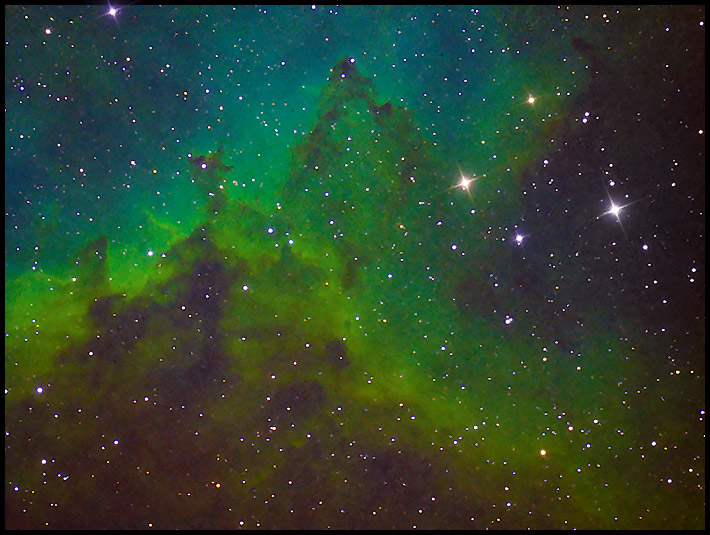01/07/2015. A clear snap: the temperature fell all day, down to 11°F late at night and 6°F for an overnight low under skies so clear that the stars sparkled despite the almost full Moon. I photographed some lacy dark clouds near IC 1805, a faintish target chosen in part to see if the narrowband filters really do let me ignore the Moon. Why, yes, I think they do:

Neighborhood of IC 1805
AT10RC @ F5
6x900s Ha, 5x900s O-III, 4x900s S-II
(Hubble palette, 3h45m total)
That's the way it's supposed to work. The math says that these filters' passbands are so narrow that panchromatic moonlight should be knocked down so that it's no more obtrusive than the light of a very narrow (3% ?) crescent when shooting without filters. As I knew it was in H-a, so it seems in O-III and S-II also. I broke off about an hour earlier than absolutely necessary in an effort to shoot Comet Lovejoy. An hour early for IC 1805 was half an hour late for the comet, and it was already in the trees to the southwest by the time I lined up on it. S'OK: tomorrow night and the night after that, the comet will be higher and the Moon will be lower.
The kit provided some excitement early: the USB cable to the CCD has mutineed. I bypassed the cable routed through the USB hub and connected the camera directly to the Aspire One netbook for the evening using the USB cable stashed in the RV's kit. It's time to lay in spares; when one goes, the rest may follow. Most of my cables aren't made for the environment to which I consign them.
Also, the Robofocus hand control only actuates "in" travel -- the computer drives it both ways so the fault is not in the main cable or in the main controller. Has to be in or associated with the little auxillary box (whose simple innerds I have already resoldered once). I took it apart again and saw no obvious problems. It could be another cable failure, but the box and a fresh cable (they ship together) comprise the cheapest possible maintenance item in this entire outfit. Replacements are on the way as are spare USB cables.